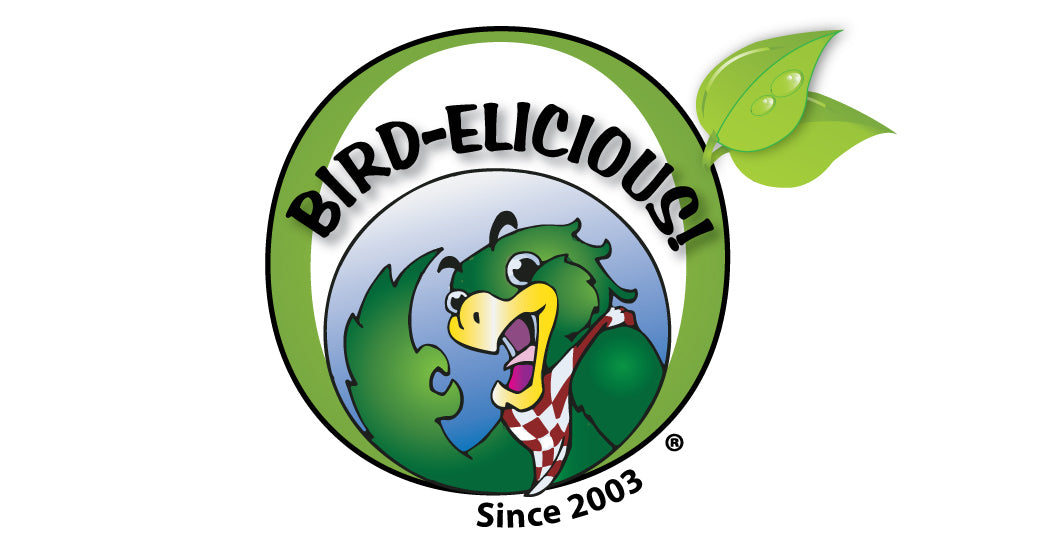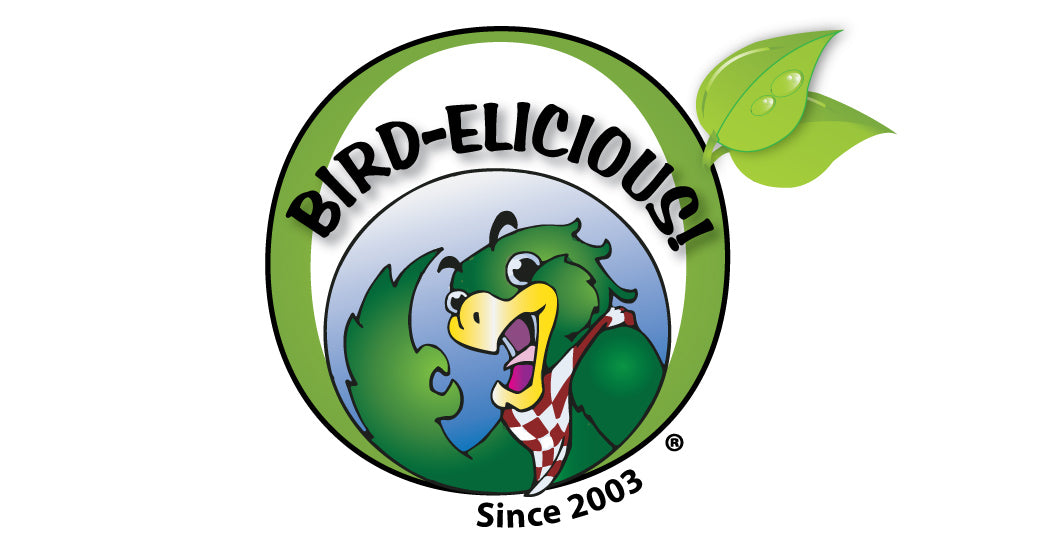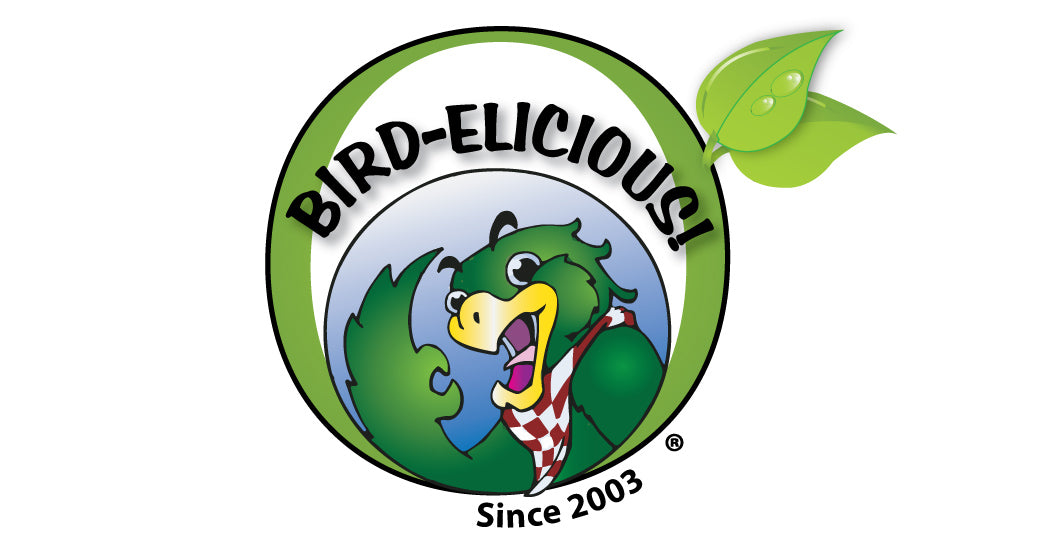Not much attention is given to our birds’ beaks and talons, but they can tell us volumes about the health of our bird if we will take the time for a close look.
While it’s normal for our birds to “shed” the top layer of their beaks and talons (consisting of both legs and nails) during periods of growth, constant shedding may imply a nutritional problem. In addition if our birds’ beaks and talons appear dry on a regular basis we should be concerned. Most species should display beaks and talons that appear just short of glossy; they should have a matte finish that doesn’t look dry and dull. In other words the color whether your bird has a dark beak or a neutral tone should be rich in color, not dried out and scaly. The only time your bird’s beak and talons should look flaky is when your bird is in growth mode or shedding due to regeneration. Scales on our birds’ beaks may indicate parasites. Overgrown beaks and talons might indicate problems with internal organs.
If your bird’s beak and talons are constantly dried out and flaky you need to consider some possibilities regarding your bird’s diet.
Let's look at some healthy beaks first:



1. Is my bird under-hydrated?



Is your bird's beak beginning to appear dry like this bird?

Drinking Water
Under-hydration can be due to the lack of clean, fresh water in your bird’s environment. If your bird senses that it doesn’t have access to clean, fresh water then it may not want to drink enough water to keep itself adequately hydrated. As a result your bird’s entire body will be lacking in hydration. If your bird’s beak and talons are showing a lack of hydration its internal organs are already starving for moisture. This means that your bird is not absorbing the nutrients from the food it is eating. Moisture is absolutely vital in the absorption of all nutrients from the food your bird consumes. And not just any moisture, but drinking water on the higher pH level from about 7.2 to 8.0 is the best level for exotic birds. This pH level drives nutrients into the cellular level of our birds’ digestive tracts.
Environmental Humidity
Is the air near and around your bird too dry? It’s a good idea to keep a hygrometer near your bird’s environment to measure the relative humidity. I like to keep our birds’ humidity level at or near about 55 to 75% at all times. Think about this. In their indigenous regions the humidity levels are quite high, especially for those birds whose indigenous regions are the Rain Forest. Their skin soaks up humidity. If your bird room is too dry it stands to reason that their beak and talons are going to dry out too. If this is the case in your bird room go out and purchase a small, inexpensive cool vapor humidifier. I like the ultrasonic kind. They are easy to clean and operate very quietly. You can find them at almost any local drug store.
Dietary Fats & Amino Acids
Under-hydration also occurs from the lack of the correct dietary oils/fatty acids. If your bird is not receiving the right kind or enough fatty acids in its diet, along with the right amount of dietary sodium for the saponification (hydrolysis-breaking down) of those fatty acids then your bird will also be under-hydrated. In the wild exotic birds consume lots and lots of tropical fruits and tender greens along with a good amount of animal proteins in the way of insects and mollusks that contain high amounts of Omega 3s and the amino acid Lysine. Omega 3 is anti-inflammatory and Lysine is strongly hydrophilic meaning it attracts, mixes with and dissolves in moisture as it passes through the digestive tract.
On the other hand if we are feeding our birds a diet high in Omega 6s and the amino acid Arginine we are setting our birds up for just the opposite to occur in their system. A diet too high in Omega 6s will potentially be inflammatory. Arginine is weakly hydrophilic. Therefore it will not absorb and mix with or dissolve in water as efficiently as Lysine. This can potentially leave our birds’ entire systems inflamed and under-hydrated. Both Lysine and Arginine are “basic” amino acids, therefore they are not acidic to the body. That having been said Arginine is slightly more acidic than Lysine and therefore would have a tendency to contribute to the overall acidifying of a body’s system making it less alkaline, yet another reason to reduce Arginine in our birds’ diet and increase Lysine. Is it any wonder that Nature took care of that in the wild regions where exotic birds originate providing tropical fruit abundant in both Omega 3s and Lysine?
It is possible that a bird can be receiving too many, or not absorbing dietary oils. In this case the beak and/or talons may appear too glossy or shiny. If this is the case you need to find out if you are feeding foods that are too high in fat, too many dietary oils or if your bird simply is not absorbing the dietary fats you are feeding.
Sodium
I casually mentioned sodium. This trace dietary mineral is not to be taken for granted; it is absolutely essential for the hydrolysis process (breaking down of dietary nutrients). Sodium not only begins the breaking down of nutrients by extracting digestive acids from the digestive tract, it also mixes with dietary fats for the saponification process in order to liquefy those fats. Dietary fats are broken down into miniscule molecules and then absorbed into the metabolic system where they are transported throughout the entire body, even the brain as well as the beak, the skin and leg skin and talons. If the correct level of sodium is not present in our birds’ diets complete and total saponification of dietary fats cannot take place. Much of the dietary fat we feed to our birds then circulates in the system finding its way to organs collecting as fat globules, adipose tissue creating obesity and depositing into the liver where it can potentially lead to fatty liver disease. Knowing this we must understand the right kind and correct level of sodium for our birds’ diets. This is why birds in the wild seek out clay licks and high sodium foods, but to add table salt to our birds’ diets is risky business. Instead we need to be adding small amounts of Terramin® CA-Montmorillonite clay to our bird’s diet. This clay is rich, reddish-brown clay complete in trace minerals and very similar in particle size to the Peruvian clay wild exotic birds consume. Particle size is of prime importance so the trace minerals can be absorbed through the digestive tract. In addition, knowing that our birds actually seek out high sodium foods in the wild we would do well to feed some amount foods containing naturally occurring dietary sodium similar to foods they might consume in the wild. Foods such as mussels, clams, snails and oysters might be a good source of sodium. These foods also contain a good source of animal protein, long-chain Omega 3s, B vitamins including B12, Choline, Folate, proline and glycine for the regeneration of collagen necessary to grow beaks, talons and feathers. If you decide to feed mollusks be sure to rinse well and slightly steam. Never, never feed these raw to your bird.
2. Scaly Face Mites


Some species are susceptible to scaly face mites. This is most common in the smaller species such a Budgerigars, Canaries, and Cockatiels, although other birds have been known to have these parasites.
These parasites can attack the beak as well as the face. If your bird has scale on its beak that doesn’t seem to go away even after you scrape it off, or it seems to be growing, even onto your bird’s face it’s time to visit your veterinarian. These tiny parasites can also grow on your bird’s legs and talons.
3. Overgrown Beaks & Talons


A very large number of us in the avian community have dealt with overgrown beaks and talons. These overgrown beaks and talons are not usually due to a simple case of our birds not chewing on their foraging toys; this is usually due to liver disease. Unfortunately most cases of liver disease could have been avoided if the correct diet would have been in place from the start. Diets too high in Omega 6s combined with high starch diets along highly processed foods lacking in living and active digestive enzymes have left the majority of our birds starving to satisfy their nutritional profile. Adding insult to injury incorrect levels of synthetic Vitamin A and synthetic Vitamin D along with the lack of healthy dietary fats in many foods have probably contributed to fatty liver disease. Vitamins A and D, both fat-soluble vitamins require enough fat circulating in the body’s system in order to be properly absorbed. When there is not enough healthy dietary fat present in a bird’s system these vitamins circulate in the system until they finally find a resting place in organs such as the liver potentially adding to or causing fatty liver disease.
Unfortunately liver disease is only one sign of other problems on the horizon if symptoms have not already made themselves known. Diabetes and/or cardiovascular disease will most likely soon follow in a bird with a chronically overgrown beak and/or talons.
If your bird is or has started to show signs of a chronically overgrown beak and/or talons it’s time to address your bird’s liver. Detoxification of the liver is in order as well as a total diet overhaul removing and/or reducing foods that are high in Omega 6s, starches, and those foods that are highly processed.
4. Soft Beaks
This is rare, but it does occasionally happen. Every once in a while I run across someone concerned that their bird’s beak is rubbery soft. In other words when they touch their bird’s beak they can actually squeeze it and it will be kind of “rubbery.” In my opinion this can be due to some kind of fungus like a Candida overgrowth or Aspergillosis or lack of nutrients.
Most often a soft beak is due to malnutrition usually from a lack of calcium absorption. Rather than pushing more calcium down our birds I am finding that we actually need ensure that our birds have enough magnesium in their diet. Magnesium aids in the absorption of calcium. While Vitamin D has been touted to help with the absorption of calcium, medical science is now learning that too much Vitamin D may be adding to liver and cardiovascular disease, especially synthetic Vitamin D. In addition medical science now touts the ratio of 1:1 or 1:2, calcium:magnesium understanding that magnesium not only aids in the absorption of calcium, but also chelates calcium buildup from arteries, blood vessels as well as any calcium stones that may be forming in the kidneys. It stands to reason that if calcium is not properly absorbed beaks and talons will be soft. Another reason our birds require adequate calcium absorption is for good muscle tone and coordination. Calcium and magnesium both are absolutely necessary for proper muscle control and coordination. If the diet does not include both of these essential nutrients in the correct levels and ratios our birds will lack proper muscle control and coordination. (Are you thinking wing-flipping and toe-tapping?)
As we can plainly see nutrition is not just a one-size-fits-all, slam-dunk topic. Often by the time our bird is showing signs of malnutrition there are many organs beginning to fail as the result of an imbalance nutrients in the diet. Each nutrient requires other co-nutrients in order to be absorbed and metabolized. All nutrients need to be introduced at very specific levels and amounts. We can’t just throw foods into our birds’ diets in the manner of “throwing in the kitchen sink” and expect our birds’ systems to work it all out. While this may be possible in the wild where our birds have access to countless varieties of foods from which to choose using their instinctive intuition, there is absolutely no possible way we can achieve the same outcome in our homes. However, using extreme manners of feeding where we use all highly processed foods, or all seed diets, or throwing out the standards we have available to us to use as guidelines is folly on our part. In order to begin to come close to feeding our birds really, really well we have to utilize some kind of scientific reasoning along with good common sense. Utilizing the science we have from field research along with the standardized nutrient levels already established, along with our common sense regarding what birds would consume in their wild, indigenous regions gives us a good starting point.
©10.30.2015 Machelle Pacion Passion Tree House LLC All Rights Reserved




Leave a comment (all fields required)